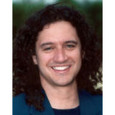To some people, meditation means sitting in a dark cave on top of a mountain in a loin cloth, burning incense and chanting some foreign Sanskrit word while eating nothing but tree bark.
Other people define meditation as a state they experience while participating in an activity they are passionate about, such as painting, athletics, or perhaps even making love.
Some people value the benefits of meditation over the practice itself. Others find their meditation technique to be the same as meditation itself.
Still, many would agree that there are certain kinds of awareness that fit the definition of meditative states. Yet these states can be very different from one another.
Compare concentration and awareness.
We could define concentration as an ability to focus on one thing for a long time. Awareness could be defined as allowing attention to flow from one thing to another while not getting "stuck" on any one thing.
These appear to be very different abilities that could bring about very different states of consciousness. Yet when reading about how to do meditation, one or the other of these can be the stated goal.
Here is a story that helps to differentiate between them. I received copies of letters that passed between U Ba Khin, a Burmese meditation teacher, and one of his students in the West, Mrs. King, the wife of a diplomat. Mrs. King had studied with U Ba Khin in Burma, and received these letters from him in order to assist her in her meditation practice after she returned to America. She was given detailed information about developing her concentration so that she could learn to communicate with U Ba Khin via telepathy and continue to receive his meditation instruction in this fashion. I'm going to stay out of the argument about whether telepathy is just superstition or whether it is actually possible; what is important is the next part of the story.
I shared these letters with my friend, Robert Hover. Robert was one of the very first meditation teachers in the West. He was also one of those U Ba Khin asked to carry on his Buddhist meditation lineage, which is pretty unusual since Robert was neither raised Buddhist, nor was he Asian.
Robert read the letters, then called me to say he was amazed to discover that U Ba Khin knew these particular concentration techniques.
This amazed me as well. I had to ask, "Weren't you supposed to continue the lineage for your teacher? How could you not know about these?" Robert said, "I haven't the same talent for concentration skills that Mrs. King had, so these teachings and practices were never covered in discussions with my teacher. Amazing, isn’t it?"
Clearly, Robert's teacher was very skilled in meditation to be able to teach specific practices tailored to a student's unique abilities. As I've explored the teachings received by other students of U Ba Khin, I've discovered that each them received slightly different instructions from the others.
We are fortunate to live at a time when there is a lot of communication between all of the different scientists, researchers, psychologists, students and teachers who are involved with meditation. We can now explore in depth the meanings of words like "awareness," "concentration," "meditate," or "meditation." Hopefully, these conversations about meditation instruction and meditation techniques will improve our ability to understand what is essential to meditation practice, in order to make it more accessible and more understandable. I hope this will help us to tease out the most effective aspects of meditation from the cultural components they sometimes get lost in.
I imagine that as we gather better and better understandings of meditation, we will also find better techniques (or improvements on techniques) to allow more people to effectively enjoy the benefits of meditating.
Steven Sashen began meditation when he was eight years old, was one of the first biofeedback pioneers, and researched cognition and perception at Duke University. In addition to a successful career as an entrepreneur and entertainer, Steven has taught transformational techniques around the world and developed the Instant Advanced Meditation Course, which Dr. Gay Hendricks calls, "Perhaps the fastest and easiest way to relax, expand awareness, and find deep inner-peace."
Additional Resources covering Meditation can be found at:
Website Directory for Meditation
Articles on Meditation
Products for Meditation
Discussion Board
Steven Sashen, the Official Guide To Meditation

Post new comment
Please Register or Login to post new comment.